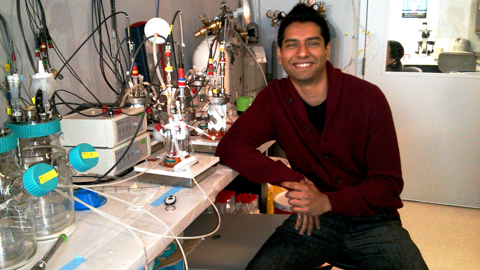
Researchers at the University of Toronto’s Institute of Biomaterials & Biomedical Engineering (IBBME) and the McEwen Centre for Regenerative Medicine have developed the first-ever method for creating living, three-dimensional human heart tissue that behaves like mature heart tissue.
Importantly, the method can be used to make models of both healthy and arrhythmic beating heart tissue. Findings were published in PNAS (Proceedings of the National Academy of Science) this week.
Arrhythmia is a relatively common condition in which the feedback of electrical pulses of the heart is interrupted, leading to heartbeats that might be too slow, too fast, or irregular. For some people, it can be a life-threatening condition. Having good, flexible models, such as this, can help advance strategies for treating heart disease.
Continue reading at UofT Engineering News.